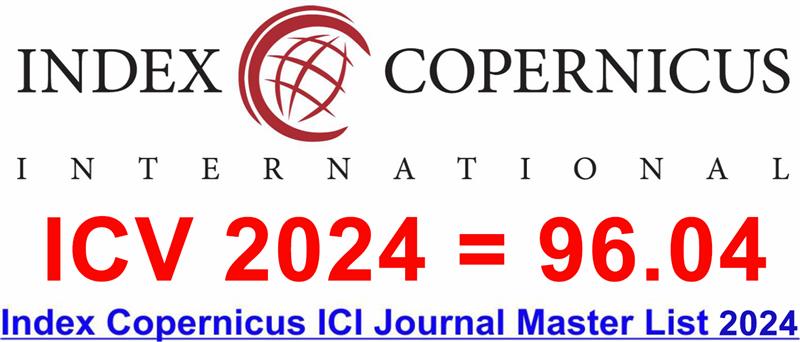Trends of Higher-Vocational English Teaching Modes in China-Based on The Visualization of Cite-Space
DOI:
https://doi.org/10.60072/ijeissah.2022.v1i01.002Abstract
Researches on higher-vocational English teaching modes in China have developed for 19 years from 2003 to 2022. There are 8342 researches on higher vocational English teaching modes till Aug. 2022. It is urgent to figure out the research trends of higher-vocational English teaching modes, which include the research hot spots, frontiers and prospects in order to make recommendations for the further researches. Since the number of relative researches has been decreasing since 2018, 3058 researches on higher-vocational English teaching modes from Jan. 2018 to Aug. 2022 on CNKI platform were collected for this study. Cite Space 6.1.R3, as literature visualization analysis tool, was utilized for the study. Cluster analysis, kkeywords visualization function, burst detection function, keywords clustering and timeline function of Cite Space were applied for this research. As the analysis results indicate, the major research trends of higher-vocational English teaching modes include blended teaching mode in China; higher-vocational English teaching modes based on We- chat and other platforms. Research frontiers include business English, public English and hotel English teaching modes; Spoc (Small Private Online Course) teaching modes. Research prospects include blended teaching mode in public English education. As for the authors and institutions for the literature, Zhao Keyan has 15 frequency by citation and Hunan Arts and Crafts Vocational College has the strongest strength. As for the recommendation for further researches on higher-vocational English teaching modes, blended teaching modes in public higher-vocational English education are proposed.
Keywords:
Trends, Teaching Modes, Higher-Vocational English EducationReferences
Joyce, B., Weil, M. & Calhoun, E. (2003). Models of teaching.
Yang, H., Shao, X. & Wu, M. (2019). A review on ecosystem health research: A Visualization Based on CiteSpace. Sustainability (Switzerland), 11(18).
Yang Yang, Wang Ying, He Chunyang & Huang Qingxu. ( 2020 ). International research progress and trend of urban sprawl since the 21 st century - Knowledge map analysis based on CiteSpace. World Geography Research ( 04 ), 750-761.
Wang Weili, Chen Chuanming & Fan Chengyang. ( 2015 ).The Analysis and Development Trend of the Three Major Domestic Databases.Journal Editorial Series 3( 2 ), 243-247.
Ding Ke, Ye Zhongkang & Liu Pingqing. ( 2022 ).The research context and trend of online and offline mixed teaching mode based on citespace knowledge map analysis.Journal of Liupanshui Normal University 1( 01 ), 82-90.
Luo Na. ( 2019 ).Research on the hot spots and trends of foreign language teaching based on MOOC in China - - Taking CiteSpace ' s bibliometric analysis of CNKI literature as an example.Journal of Jiamusi Vocational College 1( 03 ), 109-111.
Li Jian & Liu Wei. ( 2019 ).Spoken English Teaching Research in Higher Vocational Colleges in China ( 1999-2019 ) : Hotspots, Evolution and Prospects-CiteSpace Visual Analysis Based on CNKI Database.Journal of Guizhou Normal University ( 08 ), 64-73.
Zhang Qin & Chen Tie. ( 2021 ).Knowledge map analysis of research hotspots and trends of online courses in higher vocational colleges in China based on CiteSpace.Educational Science Forum ( 24 ), 76-80.
Wen Xiaolan & Jin Dan. ( 2022 ). Visual analysis based on CiteSpace - Research Hotspots and Frontiers of Higher Vocational English in China. Overseas English ( 12 ), 10-13.
Ma Jingxiang, Li Firan & Liu Lei. ( 2019 ).A review of the research status of ESP in China based on CiteSpace visualization analysis.Journal of North China University of Water Resources and Hydropower ( Social Sciences Edition ) ( 03 ), 107-112.
Zhang Li. ( 2019 ).Knowledge map study of domestic industry English research trends.Journal of Jiamusi Vocational College ( 05 ), 179-180.
Wu Tianhui. ( 2020 ). Review of domestic research on English flipped classroom in higher vocational colleges - Based on visual analysis of CNKI database literature from 2010 to 2019. Vocational and Technical Education ( 29 ), 73-80.
Small,H. (1986). The Synthesis of Specialty Narratives from Co-citation Clusters. Journal of the American Society for Information Science and Technology, (3), 97-110.
Li Jian & Chen Chaomei (2017). Cite Space : Text Mining and Visualization in Scientific Literature (Second Edition). Capital University of Economics and Business Press, 131.
Cheng Qi. ( 2017 ). Research on the Current Situation and Improvement Strategies of Higher Vocational English Teaching ( Master 's degree thesis, Central China Normal University ).https://kns.cnki.net/KCMS/detail/detail.aspx?dbname=CMFD201901&filename=1018233875.nh
Hu Jun. ( 2021 ).The role, orientation, status quo and reform of higher vocational English teaching. Knowledge library ( 21 ), 112-114.
Yan Hongmei & Chen Jianbo. ( 2020 ). On the current situation and reform path of higher vocational English education and teaching. English Plaza ( 22 ), 61 – 64.
Cui Dongmei. ( 2018 ). Analysis of the development trend of higher vocational English education. Modern Communication ( 05 ), 163-164.
Wang Fei (2018). On the current situation of higher vocational English education and the cultivation strategy of English application ability. Overseas English ( 22 ), 230 – 231.
Deng Xiaoyan & Liu Yu. ( 2019 ). Research on the current situation of higher vocational English education in the new era. Overseas English ( 06 ), 240-241.
Chen Rui. ( 2020 ). Analysis and reform of foreign language education and teaching in higher vocational colleges under the background of diversification of students. Liaoning Vocational and Technical College of Economics. Journal of Liaoning College of Economic Management ( 05 ), 83- 85.
Chu Jia( 2017 ). A review of the research on higher vocational English teaching mode in China. Overseas English ( 12 ), 41 – 42 + 44.
























